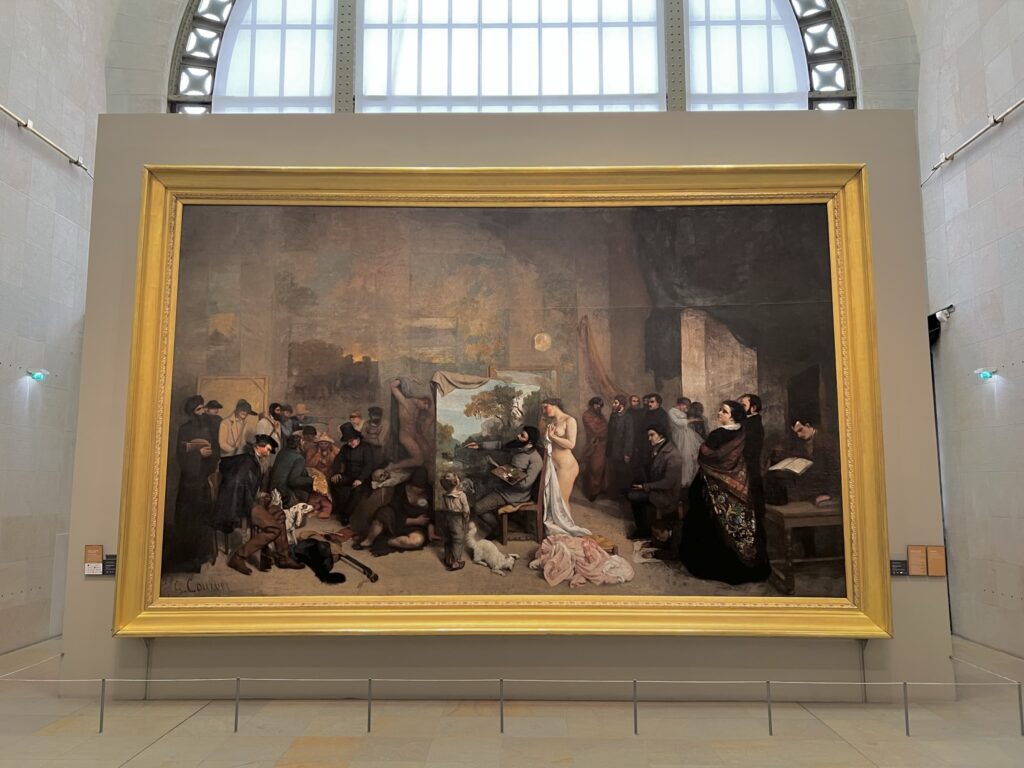
Gustave Courbet
The Artist’s Studio
1855
Oil on canvas
361×598 cm, 12×20 ft (unframed)
The following text is from the label for the artwork at Musée d’Orsay:
Courbet painted The Artist’s Studio, with its equally ambitious format and subject matter, for the Universal Exhibition in Paris in 1855. The painting was rejected by the jury and Courbet decided to display it at a solo exhibition in a building erected at his own expense and to charge an admission fee. For this event, he published a catalogue prefaced with a text entitled “Realism” in which he stated that he wanted “to create living art”.
The Artist’s Studio is a huge self-portrait in which Courbet depicts himself painting a Franche-Comté landscape in his Paris studio, surrounded by friends who feature on the right-hand side of the work, while the figures on the left according to him embody “the people, wretchedness, poverty, wealth, the exploited, and exploiters”.
The painting, which was executed quickly, demonstrates the artist’s virtuosity across the full range of genres (nudes, portraits, landscapes, still lifes and animal painting), so that the composition as a whole creates a “real allegory” whose meaning remains “somewhat enigmatic”, just as Courbet intended.